Beneficial Insects: Ladybug / Lady Beetle
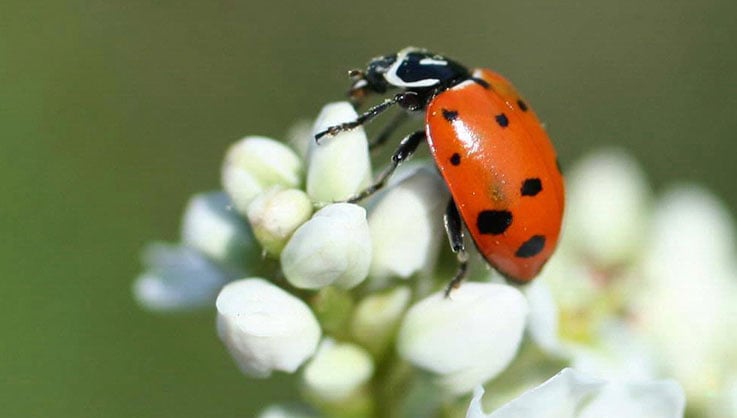 This convergent lady beetle (Hippodamia convergens) is a native species and a welcome garden visitor. Photo: Russ Ottens, University of Georgia, Bugwood.org
This convergent lady beetle (Hippodamia convergens) is a native species and a welcome garden visitor. Photo: Russ Ottens, University of Georgia, Bugwood.orgThere are more than 450 species of lady beetles in North America. Some are native and some have been introduced from other countries. Most species of lady beetles, also called ladybugs, are brick red or orange with black markings, but they may also be black with red markings. Larvae look like miniature alligators and live up to their appearance by being voracious predators of many garden pests, including aphids, mites, and other small insects.
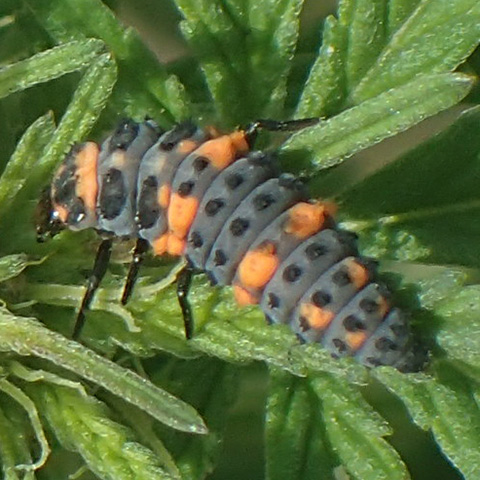 Larva of convergent lady beetle. Photo: Whitney Cranshaw, Colorado State University, Bugwood.org, author of Garden Insects of North America
Larva of convergent lady beetle. Photo: Whitney Cranshaw, Colorado State University, Bugwood.org, author of Garden Insects of North AmericaThough lady beetle larvae are the most voracious eaters, adults also consume pests. Most lady beetles prefer aphids over other food sources, but if aphids are scarce they will feed on other small insects and eggs, as well as pollen and nectar. In a pinch they'll even feed on their own young. The fact that lady beetles have a diverse range of food sources makes them particularly valuable as beneficial insects.
Lady beetles overwinter as adults, often clumped together in hedgerows, beneath leaf litter, under rocks and bark, and in other protected places including buildings.
How to Attract Lady Beetles
- Encourage lady beetles to stay in your garden by growing flowers that will give them easy access to nectar and pollen. Valuable plants include alyssum, herbs from the dill and mint families, and flowers from the daisy family including cosmos and coreopsis.
- Purchase a starter community of adult lady beetles and release them when pests are present. Ideally the adults will stay around long enough to lay eggs in the problem area.
- Place a lady beetle house in the garden to provide shelter and encourage adult beetles to remain in the area.
Other Native Species
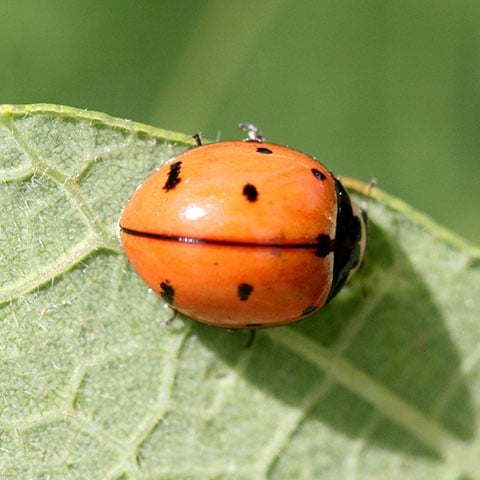
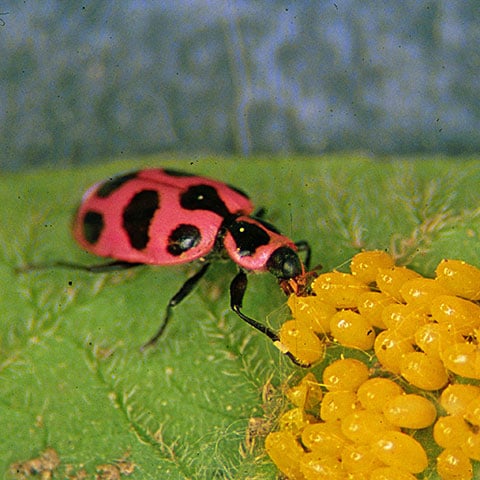
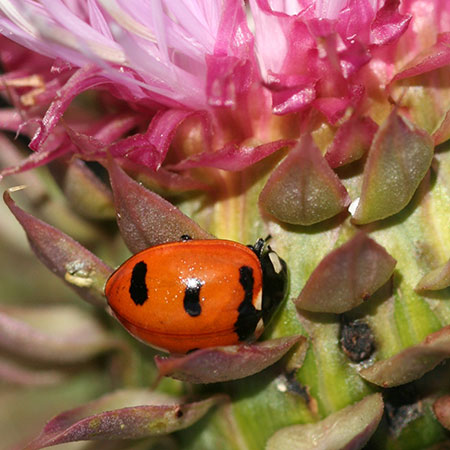 From left to right: nine-spotted lady beetle, spotted lady beetle munching on Colorado potato beetle eggs, and transverse lady beetle. Photo: Whitney Cranshaw, Colorado State University, Bugwood.org, author of Garden Insects of North America
From left to right: nine-spotted lady beetle, spotted lady beetle munching on Colorado potato beetle eggs, and transverse lady beetle. Photo: Whitney Cranshaw, Colorado State University, Bugwood.org, author of Garden Insects of North AmericaAsian Lady Beetle: Pest Species
Non-native lady beetles, in particular the multicolored Asian lady beetle (Harmonia axyridis), have become a nuisance in many parts of the country when large numbers of them find their way indoors to overwinter. It also will prey on native lady beetles as well as pest insects. Our window-mounted Ladybug Buster is an easy, nontoxic way to control invading Asian ladybugs.
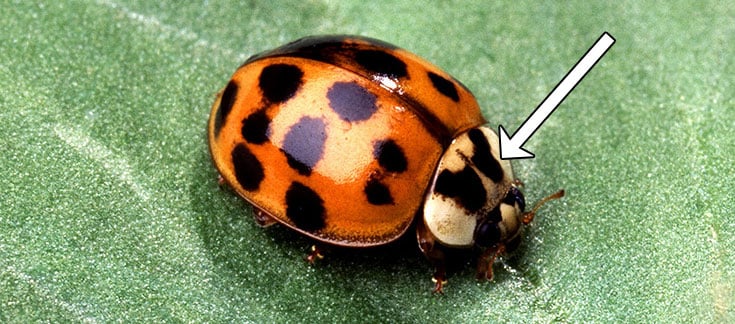 This is a multicolored Asian lady beetle. Note the M-shaped (or W-shaped) mark behind the head and the white "cheeks." Photo: Scott Bauer, USDA Agricultural Research Service, Bugwood.org
This is a multicolored Asian lady beetle. Note the M-shaped (or W-shaped) mark behind the head and the white "cheeks." Photo: Scott Bauer, USDA Agricultural Research Service, Bugwood.org
Print this Article:
Get the Dirt
Stay up to date on new articles and advice. Please fill out the information below.
